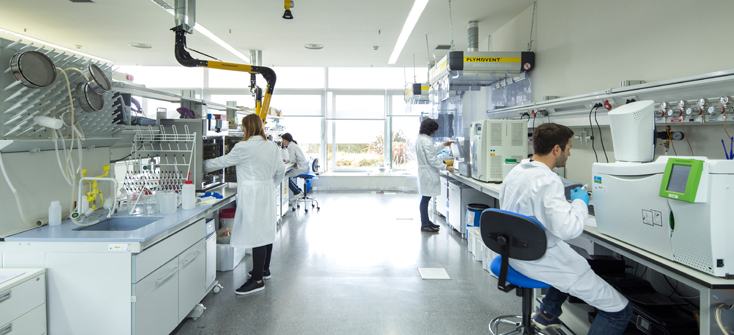
The Mixed Renewable Gas Unit is co-funded by the Galician Innovation Agency – First Deputy President’s Office and Regional Ministry of Economy, Enterprise and Innovation, and by the European Regional Development Fund (ERDF) under the framework of the 2014-2020 ERDF Galicia operating programme. Boosting research, technological development and innovation.

- The Renewable Gas Mixed Unit is a joint project between Naturgy, Energylab Technology Centre and EDAR Bens S.A., a supra-municipal public company that provides a waste water purification service in the municipalities of A Coruña, Arteixo, Cambre, Culleredo and Oleiros.
This Mixed Unit is co-funded by the Galician Innovation Agency – Second Deputy President’s Office and Regional Ministry of Economy, Enterprise and Innovation, and by the European Regional Development Fund (ERDF) under the framework of the 2014-2020 ERDF Galicia operating programme. Boosting research, technological development and innovation. A way of making Europe.
The project’s aim is to increase knowledge not just of biogas and biomethane but also of other renewable gases such as green hydrogen and syngas, as well as assessing their impact on current infrastructures and end users.
The Mixed Unit will develop five new lines of research:
1. Improving biogas production through co-digestion and recovery of nutrients.
2. Generating green hydrogen by harnessing energy from pure water flows. This will be passed through turbines, generating hydrogen by means of water electrolysis.
3. Producing biohydrogen through dark fermentation, a biological process (initial stages of anaerobic digestion) through which hydrogen is generated based on the degradation of organic matter.
4. Gasification of sewage sludge to obtain bio-syngas (synthetic biogas).
5. Studying the impact of using the various renewable gases and their mixtures, from the point of view of injection into the gas grid and its use in stationary and mobile (vehicle) applications.
Phase 1 of this Mixed Unit (2016-2019) focused on increasing knowledge on the renewable natural gas and biomethane production process in the WWTP sector, primarily by implementing a membrane-based purification system and by designing, commissioning and operating the first biological methanation pilot plant in Spain. Biomethane generated in this project is currently being used as an experimental alternative fuel for the Bens WWTP van fleet, for public transport in the greater A Coruña area, and biomethane injections into the network also began in 2022.
The goal of phase 2 of the project (2020-2023) is to consolidate developments achieved in the previous phase, extending the technical scope by generating green hydrogen and syngas, as well as assessing their impact in current infrastructures and end consumers. Dark fermentation, gasification and renewable hydrogen generation by running purified water through turbines are the processing being studied in detail. Another area that has achieved positive results is nitrogen recovery as salammoniacs with hydrophobic membranes that can later be used as fertiliser. The permeability and fragility of gas network materials at different hydrogen concentrations is also being studied to assess the safety and technical-economic feasibility of its use.

The call
The Galician Innovation Agency (GAIN) published its call on 20 February 2020 for the establishment of mixed research units in line with the strategic challenges and priorities identified in the RIS3 for Galicia, co-funded by the European Regional Development Fund within the framework of the Feder Galicia operational programme for 2014- 2020, in pillar 1 “Boosting research, technological development and innovation”.
The aim behind this line of action is to consolidate, strengthen and maintain the research and innovation activity of the mixed research units created within the scope of the GAIN calls for subsidy applications for 2016 and 2017, thereby bringing continuity to and furthering the expectations, goals and results of its lines of research and work with the implementation of new activities and projects within their framework, with a view to achieving the following goals:
- To configure mixed working groups among research entities and companies to become catalysts for the development of lines of R&D+i.
- Showcasing the research groups
- To attract lines of R&D+i to Galicia
- To develop high-impact knowledge-intensive projects
- To bring research entities closer to the company
- To incentivise the transfer of R&D+i results to the market